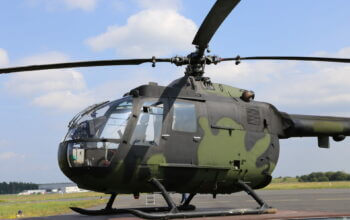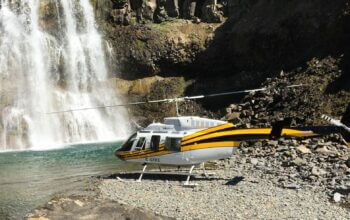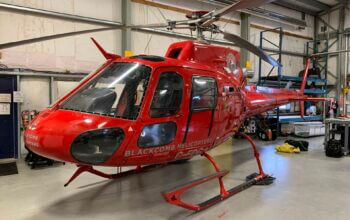The Israel Air Force (IAF) recently directly faulted Lockheed Martin for failing to share information about a defect in a component of the Sikorsky CH-53, which caused one of the IAF’s helicopters to catch fire in November 2019.
The CH-53 helicopter was completely destroyed when its engine caught fire in flight, necessitating an emergency landing. All 11 soldiers from the IAF’s elite Shaldag commando unit and two pilots onboard the aircraft escaped unhurt.

The helicopter was one of three en route to a base in southern Israel for a training exercise and was flying at about 170 meters (560 feet) when another third aircraft notified the pilots of flames coming from its engine. Pilots of the stricken aircraft carried out the emergency landing within a minute of the fire breaking out.
IAF officials grounded the entire CH-53 fleet for three weeks following the incident and immediately launched an investigation into its cause. Findings of that investigation were presented to IAF Chief Maj. Gen. Amikam Norkin on March 13.
Investigators found that the initial fire was caused by disintegration of a power relay in the left engine.
“Despite the fact that this malfunction had been identified by the manufacturer, the information was never passed along to the air force,” the IAF said in a statement. “The investigation team also found that the air force’s maintenance procedures did not find the malfunction in the relay.”
Lockheed Martin, which owns Sikorsky, said it was looking into the matter. “Sikorsky continues to work with the Israeli Air Force investigation authorities in respect to this incident,” the company said in a statement. “We will share any verified actionable information with the operating fleet. At this time we have no further comment.”
The controversy erupted at an inconvenient time for Lockheed, which is competing to replace Israel’s aging CH-53A/D with the larger, clean-sheet CH-53K King Stallion. Israel is also evaluating the Boeing CH-47 as a potential replacement for the CH-53 Sea Stallion, which Israel calls the Yasur. Germany is evaluating the same two aircraft to replace its CH-53G fleet.
The accident underscores Israel’s need to replace its legacy 53s, which have been repeatedly upgraded since entering service in the 1960s. Another high-profile Yasur crash in 2010 during a joint exercise with the Romanian armed forces killed all five personnel on board.
The process of selecting a new helicopter has been slow despite an acknowledged need to replace the legacy fleet and an ongoing shortage of spare parts for the current fleet, according to Israeli sources. Israel recently bought five mothballed CH-53s from the U.S. Marine Corps to cannibalize for spare parts.
Pulled from a U.S. aircraft boneyard, the aircraft would help “address the growing difficulty in finding spare parts for the IDF’s veteran fleet of helicopters. The U.S. Department of Defense, together with the Air Force, initiated over a year ago the procurement of U.S. helicopters to be used as spare parts for the existing systems,” the Israeli Defense Ministry said in December.
IAF pilots test flew a Boeing CH-47 in January, reportedly the final step in the evaluation process for a potential CH-53 replacement. Boeing plans to offer Israel the CH-47F Block II, which features a more robust fuselage and drive train, extended-range fuel tanks, all-glass digital cockpit, and advanced composite rotor blades that add 1,500 pounds (680 kilograms) of lift.
Israeli pilots already have flown the CH-53K, a single-main-rotor aircraft initially designed to satisfy the U.S. Marine Corps’ need for a heavy ship-to-shore helicopter to deliver supplies and troops to land during an amphibious assault.
The current fleet of CH-53s is planned to remain in service until 2028.









